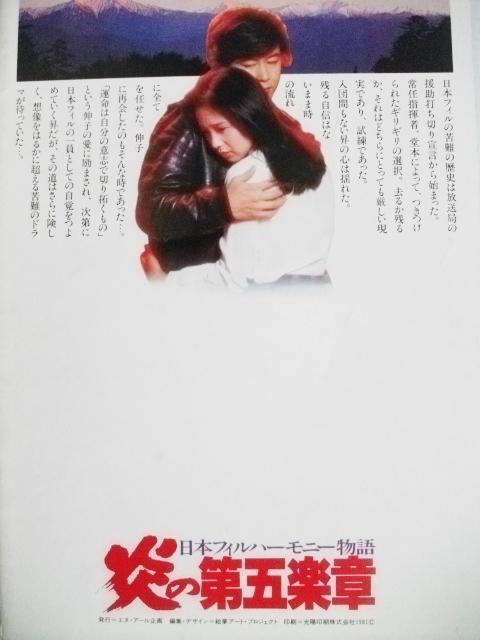Plot:
The Fiery Fifth Movement Text/Yi Ying, Nan Source: Movie Story In March 1973, when a representative symphony orchestra in Japan was established for 16 years, the TV broadcasting company, as the supervisory unit, suddenly announced that it would cut off its funding for the orchestra. In June of the same year, the company disregarded the demands of the orchestra members and public opinion from all walks of life, disbanded the funding foundation, and fired all the members. Faced with this dilemma, although the orchestra members fought against the foundation, they still got nothing, and the symphony orchestra fell into a dilemma. A group of members headed by the former conductor of the symphony orchestra, Domoto, believed that only by giving up the struggle and finding another funding foundation can the orchestra be preserved and continue to engage in art. However, most of the members headed by Nakamoto, Yoshida, Kawahara, Noma, etc. believed that as long as they persisted in the struggle and went to the people, they could truly maintain the art of music and continue to devote themselves to art. The orchestra split, and the remaining members continued to perform under the slogan of "Being with the citizens" and operated and managed themselves. Afterwards, Toyo Broadcasting Company took back the orchestra's performance venue, and the orchestra fell into a financial crisis again, causing Mr. Nakamoto to sell his car to solve the funding problem, but to no avail. Faced with this grim reality, the orchestra members were worried. Violinist Noboru Kabazawa, who had only been in the orchestra for two years, was a very talented young artist. In the face of difficulties, he began to retreat. At this time, his female classmate Nobuko came to his side. After graduating from art school, Nobuko had been teaching children to learn music in a mountain branch with only twelve students. Nobuko said to Noboru Kabazawa: "People say that destiny depends on oneself. But destiny always plays tricks on me and takes me in the opposite direction. It depends on perseverance. I think the future must be chosen by ourselves." This gave Noboru Kabazawa spiritual encouragement. She also invited Noboru Kabazawa to perform in her hometown of Komagen City. She personally and a group of local music lovers actively prepared for the orchestra to perform. But things were not smooth sailing. First, the Toyo Broadcasting Company sealed all the windows of the orchestra's residence with barbed wire while the orchestra was on a small tour, trying to force them to leave. Then, Mr. Nakamoto, an old member of the orchestra and a cellist, died of overwork. All this failed to make everyone back off, but misfortunes never come alone. Just as the orchestra was actively preparing for the autumn performance, Moscow notified the orchestra that the Soviet conductor Hechaduliang, who was originally scheduled to perform in the autumn performance, could not attend the appointment due to illness. This heavy blow made the orchestra helpless. In the face of this blow, Karasawa Noboru once again fell into an inextricable confusion. On the one hand, he wanted to devote himself to art, and on the other hand, he was tortured by the endless difficulties. He began to indulge in alcoholism. At this time, Nobuko came to him again and confessed her love to Karasawa Noboru, encouraging him to fight tenaciously. God will not disappoint those who work hard. At the most difficult time for the orchestra, one of the founders of the orchestra, the famous Japanese conductor Akio Watanabe, who is currently the conductor of the Tokyo Metropolitan Orchestra, reached out to them and agreed to come to conduct. Thanks to the assistance of the general public, the autumn tour performance was finally a complete success. The lovers, Noboru Kabazawa and Nobuko, also became a couple. The film is based on Dvorak's "New World Symphony" throughout the play, and also performed many excellent works of other classical musicians. Narration - About the title "The Fiery Fifth Movement" After watching the Japanese film "The Fiery Fifth Movement", some viewers may have doubts. Dvorak's "New World Symphony" (the music that runs through the whole film) has only four movements. How can there be a fifth movement? The answer is: this music lover symphony orchestra, in the face of the adversity of lack of manpower and financial resources, all members worked together, with the support of the citizens, resisted the pressure of the funding foundation, overcame their own spiritual weaknesses, and finally achieved a successful performance. It tells people that anyone who dares to fight and stands with the people in the face of difficulties and obstacles will surely win. This story itself is the fiery fifth movement composed by the members of the symphony orchestra for everyone.

